Back to Tour: Medicinal Plants Tour
|
Crataegus ambigua Russian Hawthorn |
Denver Botanic Gardens
Gardens Navigator 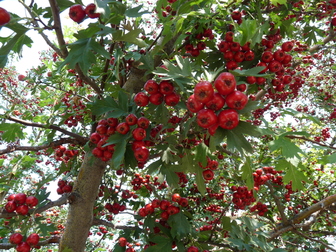
|
|
Accession Number: 791747*1 Map | Images | |
| More about Crataegus ambigua | |
| TOUR DETAILS |
Medicinal uses: Hawthorn’s main uses are as an antispasmodic (works against muscle spasms), cardiac (promotes heart health), diuretic (increases the passing of urine), and vasodilator (widens blood vessels). It also helps in balancing blood pressure and can be a sedative on the nervous system. For this reason, it is also known as an anxiolytic (anti-anxiety) plant. The bark of hawthorn has astringent (dries oily skin) properties which helps in treating malaria or other fevers. The fruit is mainly used in jams, though a powdered version can be used in breadmaking. The young shoots are known for their nutty flavor and are a tasty addition to any salad. Mythology/Folklore: In Celtic mythology, hawthorns were believed to be homes to the faeries, or Wee People. To cut down a hawthorn was to invoke the wrath of the faeries. People living in medieval times believed that hawthorns smelled like the Great Plague of London. Scientists have found that the chemical trimethylamine present within hawthorn flowers is also found in decaying animal tissue. Oddly enough, the smell hasn’t deterred anyone from planting them. In fact, a sprig from the Holy Thorn of Glastonbury, supposedly sprouting from the staff of Joseph of Arimathea, is sent to the Queen of England every Christmas. The Latin name Crataegus means “strong goats” in Greek, alluding to the practice of Greek farmers feeding their goats hawthorn berries. The word “hawthorn” comes from the German hagedorn meaning “hedge thorn,” as hawthorns are often used as hedges in landscaping. The pictured hawthorn is Crataegus ambiguata, or Russian hawthorn. However, it is Crataegus monogyna that is used for medicinal purposes. Medicinal recipe: Hawthorn Vinegar: Fill any size jar half full with dried berries (haws). Next, fill the jar with apple cider vinegar. Cap tightly and shake daily for one week. Let the mixture sit for several weeks. Make sure to shake weekly. Strain when the mixture seems ready. Culture: (from staff horticulturalist Larry Jackel) Hawthorn is known to be vulnerable to fireblight, so prune in the winter, sterilizing the tools between uses. You can grow these from seeds or cuttings. Once the plants have been established, basic maintenance is needed as hawthorns can be quite hardy. Hawthorns are known to have extra sprouts around their base. |
| LOCATION GROUP | Bonsai Pavilion |
| FAMILY NAME | Rose Family |
| FAMILY | Rosaceae |
| ACCESSION DATE |
October 22, 1979 (When this plant was acquired and registered in the database) |
| DATE LAST MEASURED | June 03, 2009 |
| SPREAD (FEET) | 19 |
| FLOWER COLOR | white |
| FRUIT COLOR | red |
| USDA HZ | 4 (Coldest Zone Where Hardy) |
| HABIT | Dwarf Tree; Tree |
| SOIL | Well-drained soil |
Location Map for 791747*1 Crataegus ambigua
Map Help
Flowering
When Crataegus ambigua has been observed flowering at Denver Botanic Gardens
 | ||||||||||||||||||||||||||||||||||||||||||||||||||||
| AVE. |  |
 |
 |
 |
 |
 |
 |
 |
 |
 |
 |
 |
 |
 |
 |
 |
 |
 |
 |
 |
 |
 |
 |
 |
 |
 |
 |
 |
 |
 |
 |
 |
 |
 |
 |
 |
 |
 |
 |
 |
 |
 |
 |
 |
 |
 |
 |
 |
 |
 |
 |
 |
| 2023 |  |
 |
 |
 |
 |
 |
 |
 |
 |
 |
 |
 |
 |
 |
 |
 |
 |
 |
 |
 |
 |
 |
 |
 |
 |
 |
 |
 |
 |
 |
 |
 |
 |
 |
 |
 |
 |
 |
 |
 |
 |
 |
 |
 |
 |
 |
 |
 |
 |
 |
 |
 |
| 2022 |  |
 |
 |
 |
 |
 |
 |
 |
 |
 |
 |
 |
 |
 |
 |
 |
 |
 |
 |
 |
 |
 |
 |
 |
 |
 |
 |
 |
 |
 |
 |
 |
 |
 |
 |
 |
 |
 |
 |
 |
 |
 |
 |
 |
 |
 |
 |
 |
 |
 |
 |
 |
| 2018 |  |
 |
 |
 |
 |
 |
 |
 |
 |
 |
 |
 |
 |
 |
 |
 |
 |
 |
 |
 |
 |
 |
 |
 |
 |
 |
 |
 |
 |
 |
 |
 |
 |
 |
 |
 |
 |
 |
 |
 |
 |
 |
 |
 |
 |
 |
 |
 |
 |
 |
 |
 |
| 2017 |  |
 |
 |
 |
 |
 |
 |
 |
 |
 |
 |
 |
 |
 |
 |
 |
 |
 |
 |
 |
 |
 |
 |
 |
 |
 |
 |
 |
 |
 |
 |
 |
 |
 |
 |
 |
 |
 |
 |
 |
 |
 |
 |
 |
 |
 |
 |
 |
 |
 |
 |
 |
| 2016 |  |
 |
 |
 |
 |
 |
 |
 |
 |
 |
 |
 |
 |
 |
 |
 |
 |
 |
 |
 |
 |
 |
 |
 |
 |
 |
 |
 |
 |
 |
 |
 |
 |
 |
 |
 |
 |
 |
 |
 |
 |
 |
 |
 |
 |
 |
 |
 |
 |
 |
 |
 |
| 2015 |  |
 |
 |
 |
 |
 |
 |
 |
 |
 |
 |
 |
 |
 |
 |
 |
 |
 |
 |
 |
 |
 |
 |
 |
 |
 |
 |
 |
 |
 |
 |
 |
 |
 |
 |
 |
 |
 |
 |
 |
 |
 |
 |
 |
 |
 |
 |
 |
 |
 |
 |
 |
| 2014 |  |
 |
 |
 |
 |
 |
 |
 |
 |
 |
 |
 |
 |
 |
 |
 |
 |
 |
 |
 |
 |
 |
 |
 |
 |
 |
 |
 |
 |
 |
 |
 |
 |
 |
 |
 |
 |
 |
 |
 |
 |
 |
 |
 |
 |
 |
 |
 |
 |
 |
 |
 |
| 2012 |  |
 |
 |
 |
 |
 |
 |
 |
 |
 |
 |
 |
 |
 |
 |
 |
 |
 |
 |
 |
 |
 |
 |
 |
 |
 |
 |
 |
 |
 |
 |
 |
 |
 |
 |
 |
 |
 |
 |
 |
 |
 |
 |
 |
 |
 |
 |
 |
 |
 |
 |
 |
| 2006 |  |
 |
 |
 |
 |
 |
 |
 |
 |
 |
 |
 |
 |
 |
 |
 |
 |
 |
 |
 |
 |
 |
 |
 |
 |
 |
 |
 |
 |
 |
 |
 |
 |
 |
 |
 |
 |
 |
 |
 |
 |
 |
 |
 |
 |
 |
 |
 |
 |
 |
 |
 |
| 2005 |  |
 |
 |
 |
 |
 |
 |
 |
 |
 |
 |
 |
 |
 |
 |
 |
 |
 |
 |
 |
 |
 |
 |
 |
 |
 |
 |
 |
 |
 |
 |
 |
 |
 |
 |
 |
 |
 |
 |
 |
 |
 |
 |
 |
 |
 |
 |
 |
 |
 |
 |
 |
Fruiting
When Crataegus ambigua has been observed fruiting at Denver Botanic Gardens
 | ||||||||||||||||||||||||||||||||||||||||||||||||||||
| AVE. |  |
 |
 |
 |
 |
 |
 |
 |
 |
 |
 |
 |
 |
 |
 |
 |
 |
 |
 |
 |
 |
 |
 |
 |
 |
 |
 |
 |
 |
 |
 |
 |
 |
 |
 |
 |
 |
 |
 |
 |
 |
 |
 |
 |
 |
 |
 |
 |
 |
 |
 |
 |
| 2021 |  |
 |
 |
 |
 |
 |
 |
 |
 |
 |
 |
 |
 |
 |
 |
 |
 |
 |
 |
 |
 |
 |
 |
 |
 |
 |
 |
 |
 |
 |
 |
 |
 |
 |
 |
 |
 |
 |
 |
 |
 |
 |
 |
 |
 |
 |
 |
 |
 |
 |
 |
 |
| 2020 |  |
 |
 |
 |
 |
 |
 |
 |
 |
 |
 |
 |
 |
 |
 |
 |
 |
 |
 |
 |
 |
 |
 |
 |
 |
 |
 |
 |
 |
 |
 |
 |
 |
 |
 |
 |
 |
 |
 |
 |
 |
 |
 |
 |
 |
 |
 |
 |
 |
 |
 |
 |
| 2018 |  |
 |
 |
 |
 |
 |
 |
 |
 |
 |
 |
 |
 |
 |
 |
 |
 |
 |
 |
 |
 |
 |
 |
 |
 |
 |
 |
 |
 |
 |
 |
 |
 |
 |
 |
 |
 |
 |
 |
 |
 |
 |
 |
 |
 |
 |
 |
 |
 |
 |
 |
 |
| 2016 |  |
 |
 |
 |
 |
 |
 |
 |
 |
 |
 |
 |
 |
 |
 |
 |
 |
 |
 |
 |
 |
 |
 |
 |
 |
 |
 |
 |
 |
 |
 |
 |
 |
 |
 |
 |
 |
 |
 |
 |
 |
 |
 |
 |
 |
 |
 |
 |
 |
 |
 |
 |
| 2015 |  |
 |
 |
 |
 |
 |
 |
 |
 |
 |
 |
 |
 |
 |
 |
 |
 |
 |
 |
 |
 |
 |
 |
 |
 |
 |
 |
 |
 |
 |
 |
 |
 |
 |
 |
 |
 |
 |
 |
 |
 |
 |
 |
 |
 |
 |
 |
 |
 |
 |
 |
 |
| 2014 |  |
 |
 |
 |
 |
 |
 |
 |
 |
 |
 |
 |
 |
 |
 |
 |
 |
 |
 |
 |
 |
 |
 |
 |
 |
 |
 |
 |
 |
 |
 |
 |
 |
 |
 |
 |
 |
 |
 |
 |
 |
 |
 |
 |
 |
 |
 |
 |
 |
 |
 |
 |
| 2012 |  |
 |
 |
 |
 |
 |
 |
 |
 |
 |
 |
 |
 |
 |
 |
 |
 |
 |
 |
 |
 |
 |
 |
 |
 |
 |
 |
 |
 |
 |
 |
 |
 |
 |
 |
 |
 |
 |
 |
 |
 |
 |
 |
 |
 |
 |
 |
 |
 |
 |
 |
 |
| 2008 |  |
 |
 |
 |
 |
 |
 |
 |
 |
 |
 |
 |
 |
 |
 |
 |
 |
 |
 |
 |
 |
 |
 |
 |
 |
 |
 |
 |
 |
 |
 |
 |
 |
 |
 |
 |
 |
 |
 |
 |
 |
 |
 |
 |
 |
 |
 |
 |
 |
 |
 |
 |
| 2006 |  |
 |
 |
 |
 |
 |
 |
 |
 |
 |
 |
 |
 |
 |
 |
 |
 |
 |
 |
 |
 |
 |
 |
 |
 |
 |
 |
 |
 |
 |
 |
 |
 |
 |
 |
 |
 |
 |
 |
 |
 |
 |
 |
 |
 |
 |
 |
 |
 |
 |
 |
 |
| 2005 |  |
 |
 |
 |
 |
 |
 |
 |
 |
 |
 |
 |
 |
 |
 |
 |
 |
 |
 |
 |
 |
 |
 |
 |
 |
 |
 |
 |
 |
 |
 |
 |
 |
 |
 |
 |
 |
 |
 |
 |
 |
 |
 |
 |
 |
 |
 |
 |
 |
 |
 |
 |
Images © Denver Botanic Gardens
 791747*1 Tree with fruit |
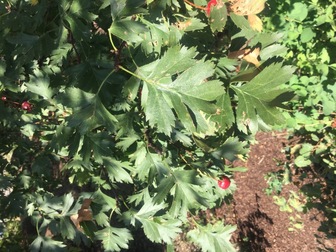 791747*1 untitled - Cindy S Newlander - Sep 18, 2015 |
 791747*1 untitled - Cindy S Newlander - Sep 18, 2015 |
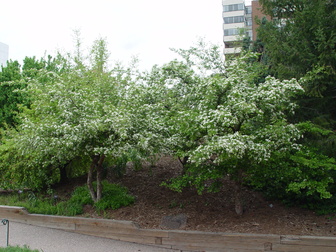 791747*1 Crataegus ambigua |
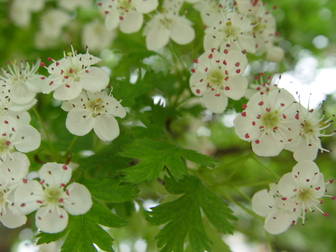 791747*1 Crataegus ambigua |
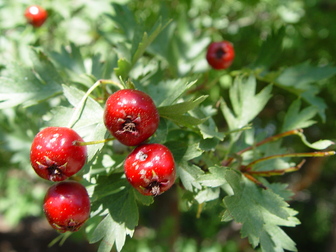 791747*1 Crataegus ambigua |
 791747*1 Crataegus ambigua |
 791747*1 Crataegus ambigua |
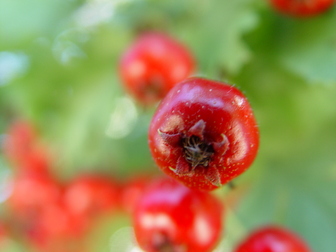 791747*1 Crataegus ambigua |
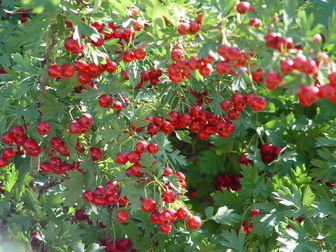 791747*1 Crataegus ambigua |
 791747*1 Crataegus ambigua |
 791747*1 Crataegus ambigua |
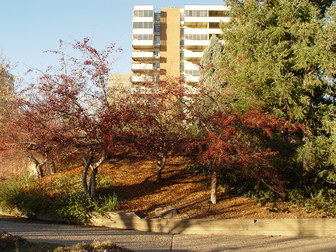 791747*1 Crataegus ambigua |
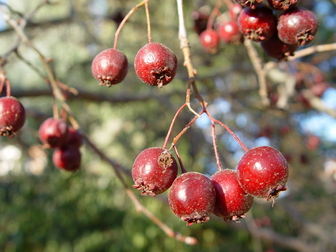 791747*1 Crataegus ambigua |
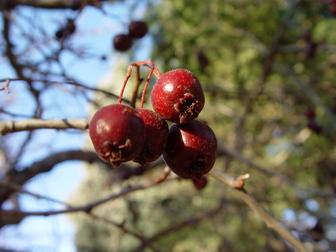 791747*1 Crataegus ambigua |
|
| ^Top of Page |

© Denver Botanic Gardens, 1007 York Street, Denver, CO 80206
Photography © Denver Botanic Gardens

Powered by







 E-mail
E-mail